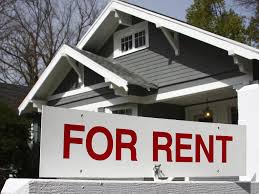ATO Tips & Mistakes to avoid when declaring the income and expenses on your rental property this financial year.
Tip 1: Apportioning income and expenses for co-owned properties correctly
- If the rental property is jointly owned with another individual (related or not), each individual must declare the rental income and claim expenses according to the individual’s legal ownership of the property. This means, if one legally own 40% of the property they must declare 40% of the income and claim 40% of the expenses incurred.
- As joint tenants, their legal interests will be split equally, and as tenants in common they might have different ownership interests.
For example:
Owner A legally owns 40% of the rental property and Owner B legally owns 60% of the property. Owner A must declare 40% of the rental income and is entitled to claim 40% of the expenses incurred. Owner B must declare 60% of the income and expenses.
Tip 2: Ensuring the property is genuinely available for rent
It’s a requirement that the property must be genuinely available for rent during the financial year to claim a tax deduction: Therefore:
- They must be able to display a clear intention to rent out the property
- Advertising the rental property so that someone is likely to rent it and ensuring rent is set in line with similar properties rent prices in the local area.
- Avoiding unreasonable rental conditions
Tip 3: Initial repairs and capital improvements
- Ongoing repairs that relate directly to wear and tear or other damage which has occurred as a result of renting out the property can be claimed in full in the same year the expenses were incurred. For example, repairing the hot water system or part of a damaged ceiling can be deducted immediately.
- Initial repairs for damage that existed when the property was purchased, such as replacing broken light fittings and repairing damaged floorboards are not immediately deductible. Instead these costs are used to calculate the capital gain or capital loss when you sell the property.
- Replacing an entire structure such as the roof when only part of it is damaged or renovating a bathroom is classified as an improvement and is not immediately deductible. These are building costs which can be claimed at 2.5% each year for 40 years from the date of completion.
- If a removable item is completely replaced and it costs more than $300 (for example, replacing the entire hot water system) the cost must be depreciated over a number of years.
Tip 4: Claiming borrowing expenses
- If the borrowing expenses are over $100, the deduction is spread over five years. If the costs are $100 or less, the full amount can be claimed in the same income year the expense was incurred.
- Borrowing expenses can include loan establishment fees, title search fees and costs of preparing and filing mortgage documents.
Tip 5: Purchase costs
- Expenses such as conveyancing fees and stamp duty incurred when purchasing the rental property can’t be claimed as a tax deduction. These expenses will be used if the property is sold, to calculate whether capital gains tax is payable or if a loss has occurred.
Tip 6: Interest paid on your loan
- If a loan is taken out for the purchase of the rental property and some of the funds are used for personal items, for example going on an overseas holiday, you can’t claim the interest on that part of the loan. You can only claim the part of the interest that relates to the rental property.
- If the loan is used solely for the rental property, then the full amount of interest paid over the period can be claimed as a tax deduction.
Tip 7: Construction costs
- As outlined previously, you can claim certain building costs, including extensions, alterations and structural improvements as capital works deductions. As a general rule, capital works deductions are claimed at 2.5% of the construction cost for 40 years from the date the construction was completed. Where the property was owned by someone else previously, and they claimed capital works deductions, ask them to provide the details so you can correctly calculate the deduction which you are entitled to claim. If these details can’t be obtained from the previous owner, the services of a professional can be used to estimate previous construction costs in the form of a depreciation schedule report.
Tip 8: Renting to family or friends
- If the rental property is rented out to family or friends below market rate, you’re only able to claim a deduction for that period up to the amount of rent received. You can’t claim deductions when family or friends stay free of charge, or for periods of personal use.
Tip 9: Capital gains on sale
- When the rental property is sold, you may have either a capital gain or a capital loss. Generally, this is the difference between what it cost to purchase and improve the property, and what was received when the property was sold. The costs must not include amounts already claimed as a deduction against rental income earned from the property, including depreciation and capital works. If there is a capital gain on sale, you will need to include the gain in the individuals tax return for that income year. If there is a capital loss, the loss can be carried forward and deducted from capital gains in later years.
Author
Elicia Rose




